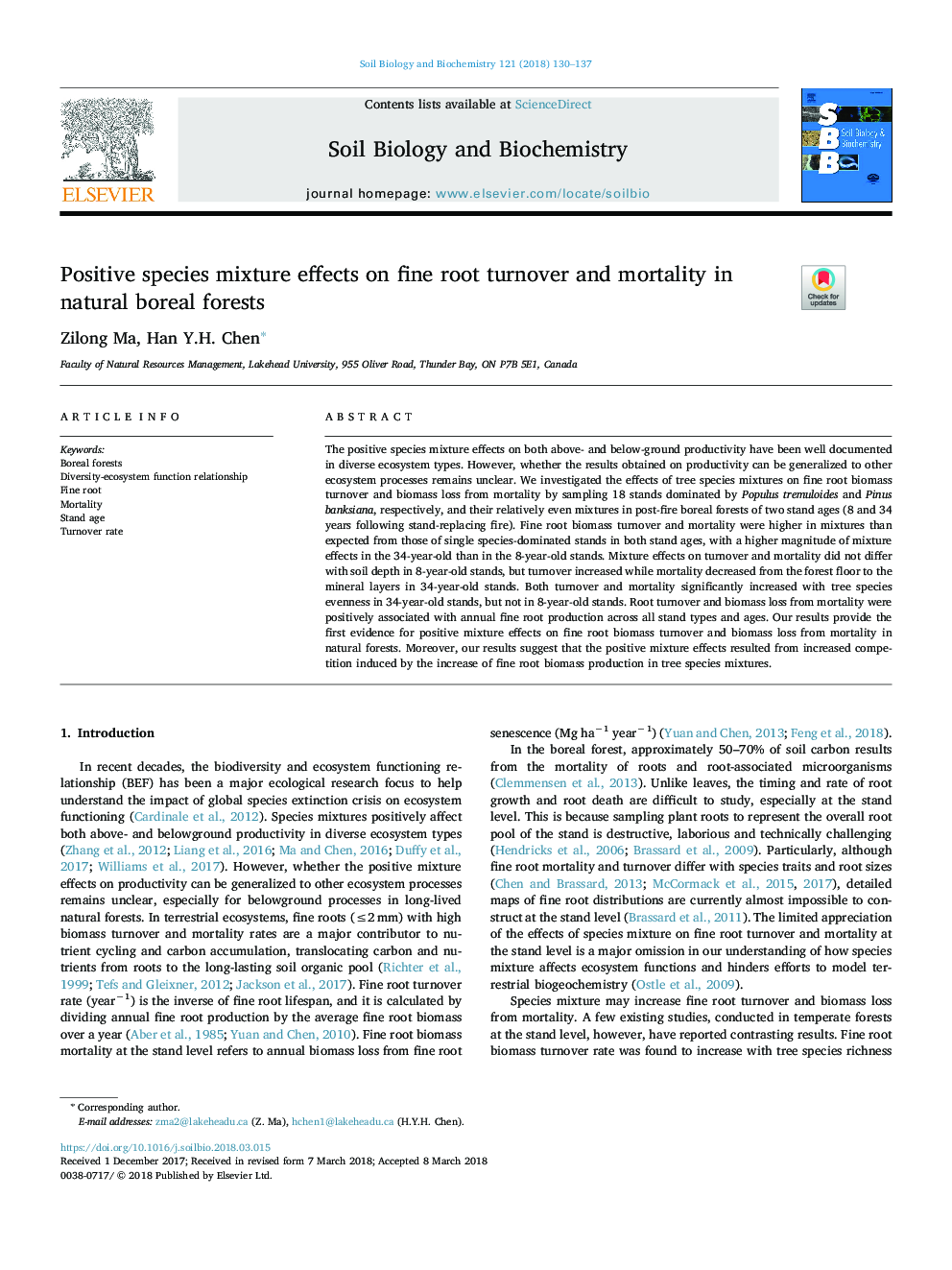| Article ID | Journal | Published Year | Pages | File Type |
|---|---|---|---|---|
| 8362789 | Soil Biology and Biochemistry | 2018 | 8 Pages |
Abstract
The positive species mixture effects on both above- and below-ground productivity have been well documented in diverse ecosystem types. However, whether the results obtained on productivity can be generalized to other ecosystem processes remains unclear. We investigated the effects of tree species mixtures on fine root biomass turnover and biomass loss from mortality by sampling 18 stands dominated by Populus tremuloides and Pinus banksiana, respectively, and their relatively even mixtures in post-fire boreal forests of two stand ages (8 and 34 years following stand-replacing fire). Fine root biomass turnover and mortality were higher in mixtures than expected from those of single species-dominated stands in both stand ages, with a higher magnitude of mixture effects in the 34-year-old than in the 8-year-old stands. Mixture effects on turnover and mortality did not differ with soil depth in 8-year-old stands, but turnover increased while mortality decreased from the forest floor to the mineral layers in 34-year-old stands. Both turnover and mortality significantly increased with tree species evenness in 34-year-old stands, but not in 8-year-old stands. Root turnover and biomass loss from mortality were positively associated with annual fine root production across all stand types and ages. Our results provide the first evidence for positive mixture effects on fine root biomass turnover and biomass loss from mortality in natural forests. Moreover, our results suggest that the positive mixture effects resulted from increased competition induced by the increase of fine root biomass production in tree species mixtures.
Related Topics
Life Sciences
Agricultural and Biological Sciences
Soil Science
Authors
Zilong Ma, Han Y.H. Chen,
